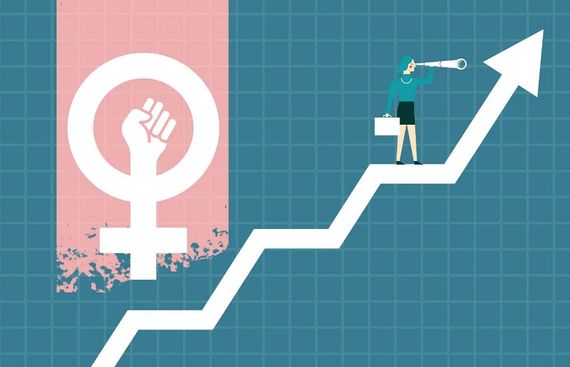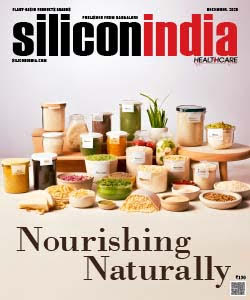Bringing Women into the Fold of India's Growth Journey
By Emmanuel Christi Das, Editor, siliconindia | Thursday, 10 March 2022, 20:31 IST

International Labour Organization reported that India's 95 percent of Women Workforce is in the informal sector, while only the remaining 5 percent in formal sector. We as Indians, need to do better. Women working in the informal sector are faced with the lack of a plethora of basic requisites that her counterpart in the formal sector would be entitled too. Maternal care, healthy working conditions, child care etc. The women in formal sector don't have it all either, they too have to face some grave concerns that bother the national interests too, like gender gap, pay gap, maternity care, sexual harassment at workplace, prejudice, etc. Formal or informal alike, we need to build a better working standard for women. Having said that, let me direct your attention to the alarming percentage of women workforce in the informal sector. THAT, needs to improve first, and at a healthy pace.
The last decade has witnessed the potential of the internet and mobile phones improving lives by providing greater opportunities and choices. Technology led or technology based solutions are bestowing meaningful lives in many ways — providing access to inspirational products and services; facilitating employment and productivity; promoting individual agency; and enabling responsive institutions for citizens.
The Next Half Billion (NHB) represent the bottom 60 per cent of India’s income distribution and have traditionally been underserved and excluded. Half of this NHB is comprised of women and they are disproportionately disadvantaged. It is imperative to pay attention to their specific needs and aspirations in order for them to participate fully in India’s growth journey.
Two-Way Consumption of Tech
There are two ways in which women today are interacting with technology. As consumers of tech, Indian women today are able to access greater opportunities. At the same time, as builders of tech solutions, there is an uprising of women entrepreneurs impacting millions of lives.
While tech is touching the lives of women entrepreneurs of micro & small ventures, the gig economy proposes a fair concept for jobs like nurses, midwives etc. Employments in these segments are scarce and during the pandemic became negligible. Tech supported gig economy may uplift women workers from the informal sector to a more formal one.
Women Entrepreneurs
The country is experiencing a surge in female tech entrepreneurs. With India's transformation, its entrepreneurs too are beginning to look rather different. Gone are the days of the stereotypical persona of a tech entrepreneur — English-speaking, upper-middle class, educated at top schools, and male. Innovators of today epitomize the diversity and hustle of an motivated India. A majority of this crowd are women, and these new female tech entrepreneurs are bold, confident and designing solutions for the many, not the few.
How Businesses can Help?
![]()
However, like already mentioned, far too many women are still stuck in the informal layer. This journey is only beginning, and we have miles to go. The economy and society at large need to step up Women’s participation. Businesses have the potential to catapult these efforts.
First, and most importantly, the internet needs to be more inclusive and safer for women. Bridging the digital divide in mobile and internet usage is only part of this, as its no revelation that tech has also increased vulnerability to risks and harms. Emphasis must be laid on “responsible tech”, pushing businesses, governments and users towards behaviours that mandates user control, privacy and data security. Extraordinary efforts are also needed to tackle the misogyny and abuse that women are particularly victim to on the internet.
Second, it's high time businesses start looking at diversity, equity and inclusion as a strategic lever, rather than just a 'check' on their memo. While leveraging women power better within businesses, leaders must work more aggressively towards achieving the unique needs of women customers.
Third. Okay, I cannot stress this enough, but we need more women in top business leadership. A strong reason for the low number of women at the top is that the pool of women at mid-levels has been minuscule. This might hurt but the true that it is: Women also tend to have smaller networks and are more hesitant to “ask for a seat at the table”.
Women leaders need not just play role models; she can make every last effort to uplift her colleagues. Changing attitudes towards working women by celebrating them in workplaces, media and popular culture is just as important.
Finally, funders must stay loyal to their true purpose. Globally, the entrepreneurs that VC and PE firms fund reflect the diversity, or lack thereof, of investment teams themselves, since a lump sum part of the deal pipeline is generated through networks. Today, lower than 10 per cent PE/VC professionals in emerging markets like India are women. This must change.
As women become more confident, engaged, and active in leveraging technology, it will provide a meaningful momentum to India’s inclusive growth agenda. Then, we can work hand in hand to eventually bring the 95 per cent informal sector into the formal umbrella, and that's what should be the blueprint for the future!


.jpg)
.jpg)

